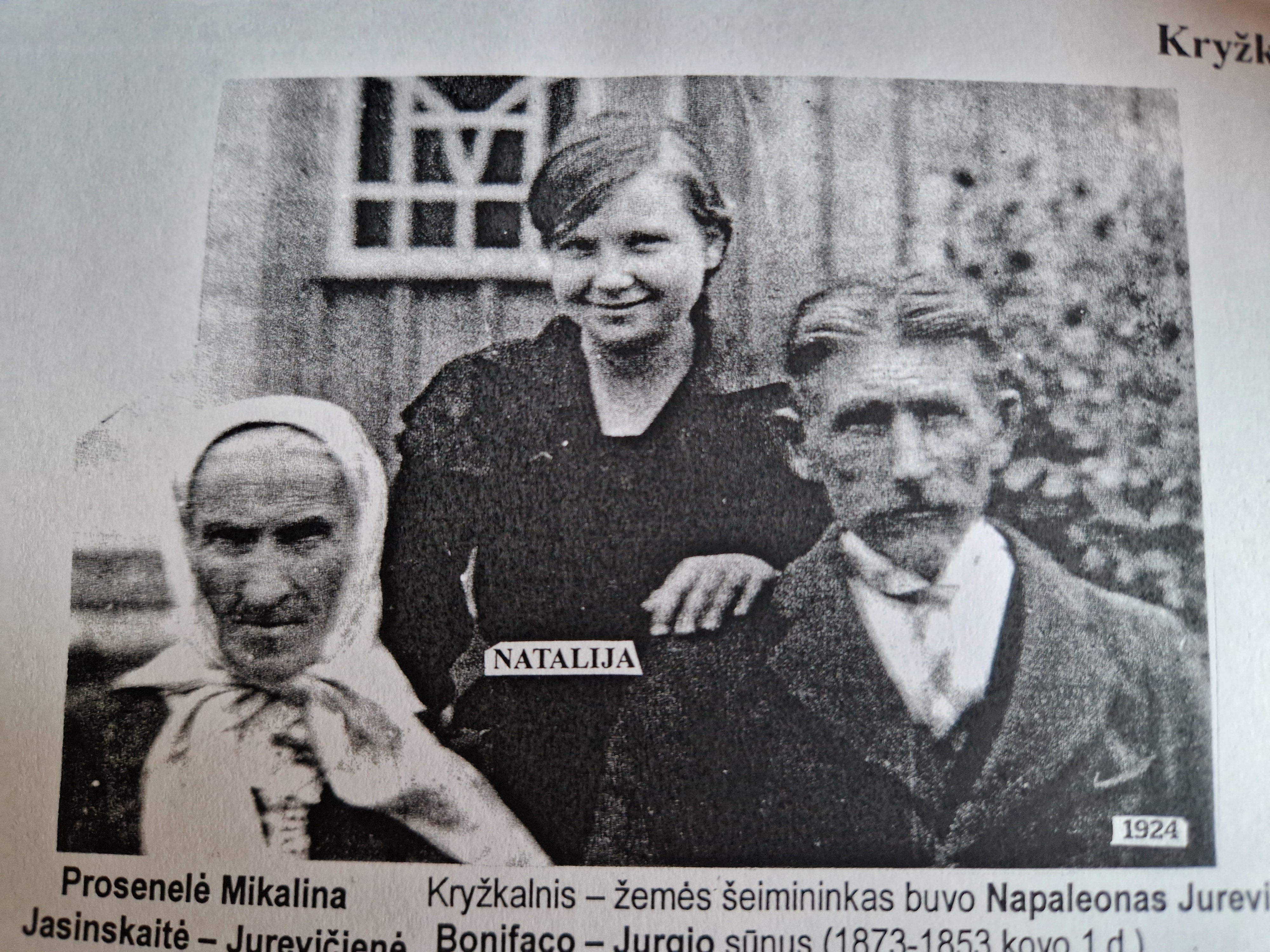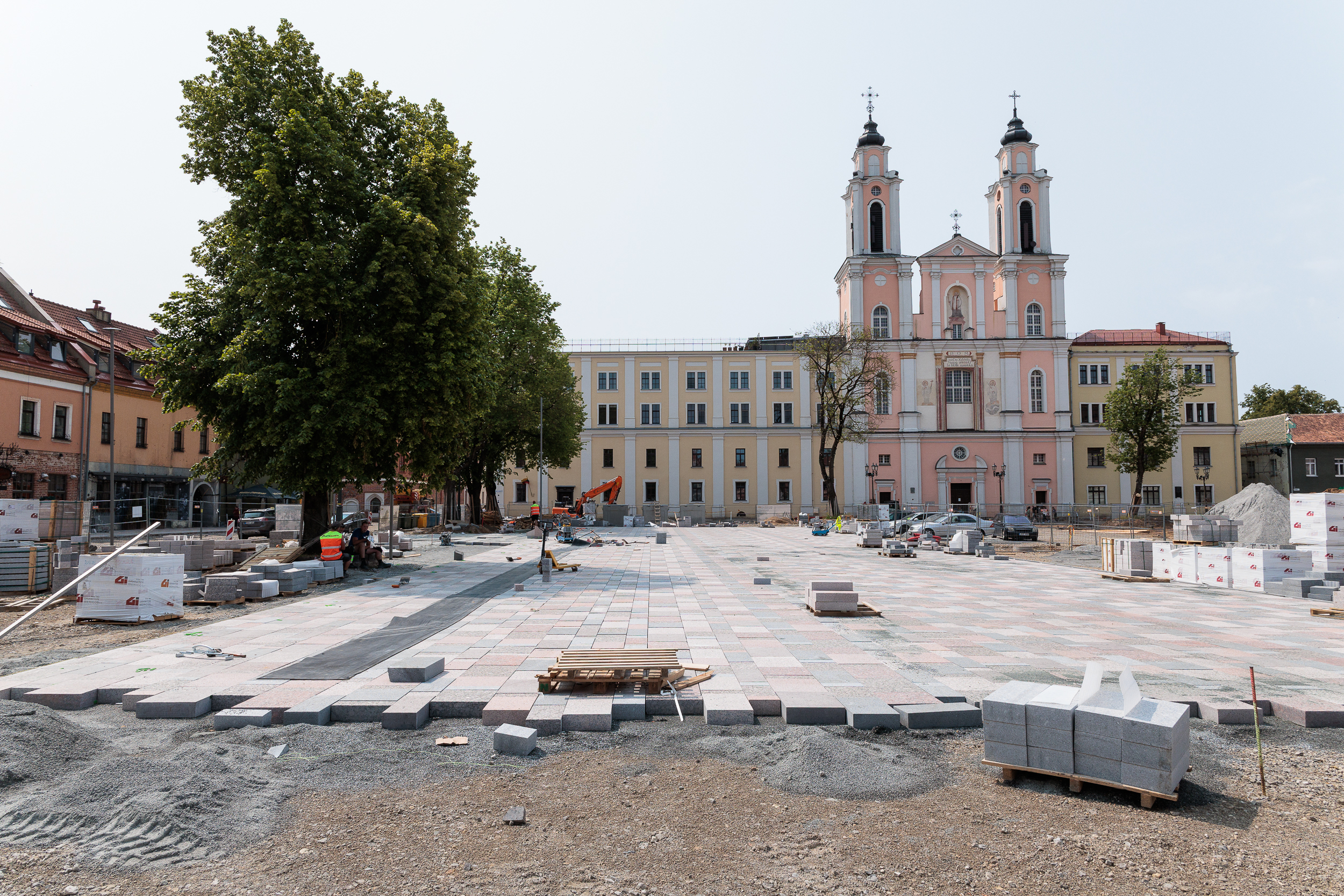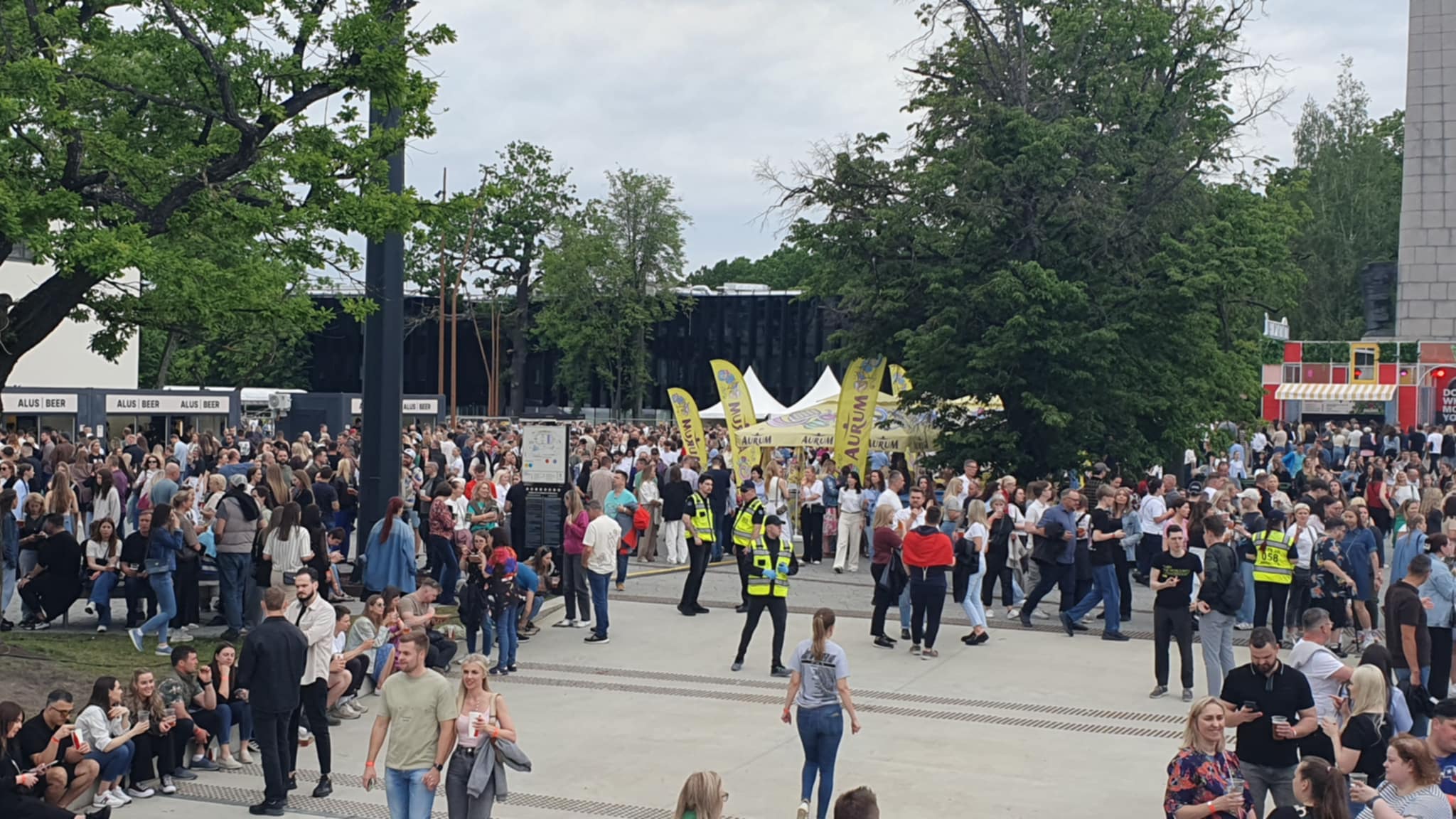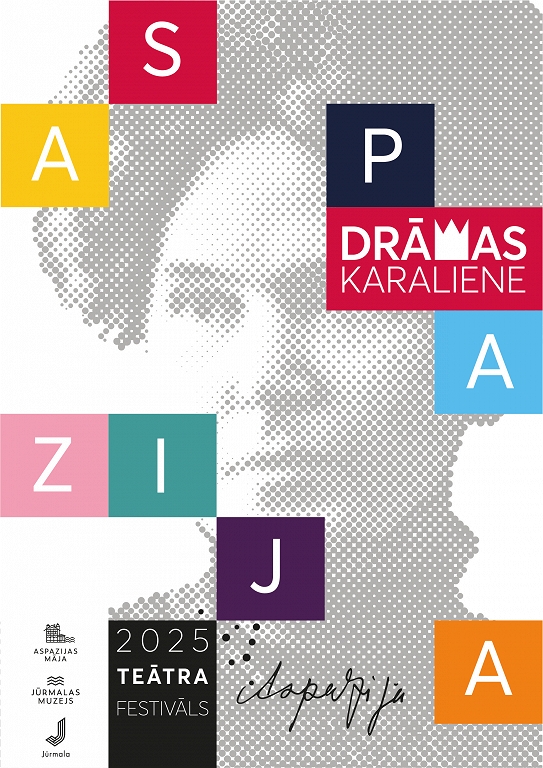The winds of the story did not distract

Herbs – from the Middle Ages
E. Kasperavičius is a hundred percent nobleman, both of his parents – the descendants of the nobility relatives, and both families have coat of arms.
« My father’s homeland was Karklėnai, near Kaltinėnai, called Knutuva. Mom’s parents – Jurevicius ‘homeland – Kryžkalnis. On the sides of the bus – my grandparents’ land. There was a mourning big commander, no one was working, ”said E. Kasperavičius.
The story of the family is so interesting and colorful that the man can tell about it for a few days.
One of the oldest ancestors mentioned in historical sources is Bartolomiejus Jurevičius, the founder of Betygala Church in 1517.
There are already more than 100 people in the family tree created by E. Kasperavičius, and the stories of the nobility of the noble relatives seek the Middle Ages.
Document: The noble origin of Eduard is evidenced by the document. Photo by Personal Archive
Earned dollars
While telling how grandfather N. Jurevičius expanded his holdings, the man talked about the beginning of the 20th century.
E. Kasperavičius’ mother was just born when her father was forced to go to the Tsar’s army in 1912.
« He was a cunning man, sent his wife to Moscow with her sister, who worked there in the hospital, and drove to Arkhangelsk and worked for the American trade fleet. Not only the family, but all the mercenaries, was planted.
Speaking about the past of the tribe, E. Kasperavičius taught that the road had been built twice through their lands.
When the Samogitian Highway was being built here, his grandfather N. Jurevičius was reduced by the tax.
For the second time, during the Soviet era, already in the time of Antanas Sniečkus, Kaunas -Klaipėda highway was built through the land of this family. Then, a couple of hundred meters from the highway, no slums could remain in both sides.
Ran away from exile
« In 1948, my parents had to flee from exile to Klaipeda, then I was only one. The post -war period was difficult. The father interacted with the partisans. He cooked samagon, gave both guerrillas and filled it to the strangers. Kasperavičius has already lived in Klaipėda. so they had firewood. ”
Eduard’s childhood passed in an old house at the Jewish Cemetery Gate, near the old market. Pylimo Street then rolled all the way to the hay market, which was near the place where the mill was later built by St. Church of the Queen of Peace of Mary.
E. Kasperavičius remembers how he went to the market with his father, he was in contact with big men there, and it was possible to guess that they were from the village.
Eduard’s father handed them some documents because they were writing very nicely. Mom has repeatedly borne her father that he would cause the family trouble. Perhaps those men were guerrillas, and their father helped them falsify the documents.
After graduating from nine general education classes, Edward entered Klaipeda polytechnic and later left for Vilnius. E. Kasperavičius lived in the capital until 1995.
The active movement was one of the largest Nijolė Ambrazaitytė helpers during the election. For many years he worked at the construction of the Vilnius House Construction.
Leased his land
When he thought of returning to the land, E. Kasperavičius only knew from his mother’s stories that his grandfather had 100 hectares of land in Kryžkalnis.
He lost his mother in 1992, and his father died in the Soviet era. The family did not have documents about family -owned lands in Kryžkalnis. It is good that when the father was still alive, they wrote down the tribe of the tree tree.
« The Soviet monument that many called just Magde were already blown up, stood leaning. In any register of protected areas and monuments to protect the sculpture. And I will do the order.
He had a truck and a tractor, sold firewood, and welded something. At the beginning of the 19th century he was close to relatives living nearby and later settled in a cottage, which was built at the Kryžkalnis Mother of the monument during the Soviet era.
The man removed some of the shrubs from the mountain, as his grandfather had taught, where he kept inserting oak in the ground. Part of the mountain had been raspberries since N. Jurevičius’ time.
Roots: E. Kasperavičius is proud to retain a photo of 1924, capturing his mother Natalia (middle), grandfather Napoleon and great -grandmother Mikalina. Photo by Personal Archive
Cross, restaurant or pyramid?
Near Kryžkalnis is the Church of Stulgiai, and then priest Juozas Širvaitis was pastor. One day, maybe in 1996, priest Alfonsas Svarinskas came to him and began to ask where to find the owner of the cross.
« We met with A. Svarinskas on the mountain itself. Both priests came and started talking to be good at this place. I was not against, but I started saying that the crosses were not released, they had been introduced everywhere. I showed them the highest place of the mountain. Sister, I mentioned that we would give part of the land for such a precious purpose.
Before that, businessmen from Klaipeda came to him. They wanted to build a glass restaurant-cave in place.
The mountain was covered with wreckage of the monument, and the road to the mountain was miserable – summer rains were washed not only by the way, but also down the stones. Sometimes even the tractor was impossible to drive up.
Lithuania was a sacred thing for A. Svarinskas.
There were other wishes – to build a sculpture on the mountain instead of Magdė, which was to portray guerrillas, climbing each other on their shoulders and watching the binoculars from where the enemies come from. This sculpture was to be reminded of the pyramid. But the authors of this idea were also in trouble for money.
E. Kasperavičius recalled another monument that the bishop of Šiauliai was built. A wooden cross was built near the ruins of the Soviet monument.
« The sister allowed it to be built. Later he began to rot and was moved to the Stulgiai Church, » recalled a resident of Klaipėda.
It took a decade
Later, the idea of doing a sword in the ground was the idea.
The idea of sculptor Tadas Gutauskas to honor the fighters fallen for Lithuania’s freedom was eventually implemented. The swords of the 11th -13th centuries are symbolized by peace.
« When we discussed the idea of the sculpture with the sculptor, I strongly advised him to make the tomb of an unknown partisan so that people should place flowers, » Kasperavičius said.
Later, a chapel was built on the donation and the names of nearly thousands of guerrillas were immortalized.
« Priest A. Svarinskas had such a goal from the beginning, he was a true patriot. The priest was very close to the Church of Viduklė. It was very simple, like all honorable people – the greater the personality, the simpler in communicating with others. Sometimes he laughed at himself.
The bell tower construction took more than a decade and still lacked money.
At the beginning of the 19th century almost 100 thousand. The then Mayor of Raseiniai Remigijus Ačas allocated the litas. The access road had to be set up and the foundations for the chapel had to be set up. Then the money ended and the work stopped again for several years.
Later, the two nuns received a legacy from America, donated money, and could continue to work, although everything was still lacking.
E. Kasperavičius said that Saulius Skvernelis, who had come to power at that time, visited Kryžkalnis and, after saying, it was ugly that he had made money at the highway.
It was only in 2018 that the chapel was completed and the monument was unveiled a couple of years later.
Relatives spread widely
There are seven bells in the chapel, and those who arrive usually call the guerrillas three times.
Virginija Bakšienė, a Vilnius architect, had the most work and concern for the installation of this monument. She still often calls with A. Kasperavičius, and urges you to go see if everything is in order.
This structure also captures the memory of A. Svarinskas, a priest, a fighter for the freedom of Lithuania, a fighter for Lithuania. This is a sculpture created by sculptor Antanas Kmieliauskas.
Next to the chapel are sloping monolithic concrete slabs, and a table with 1,137 Kestutis County guerrilla names and nicknames are mounted on them. Among them is Juozas Kasperavičius’ name
A. Kasperavičius’ father had mentioned his kinship with this partisan, only Eduardas no longer remembers, and he was not very concerned in his childhood.
E. Kasperavičius is convinced that Antanas Kasperavičius, who participated in the operation of Klaipėda to the operation of Klaipeda to Lithuania, later became a respectable teacher of Panevezys and one of the creators of the Museum of Ethnography of this city, was also a representative of the same tribe.
Several dozen closest people come to family meetings. E. Kasperavičius tried to get each family to receive documents and articles about their relatives’ collection of copies and thus preserve the message of the honorable past of the family.







/s3/static.nrc.nl/images/gn4/stripped/data133212332-41b949.jpg)